I’ve always thought there is something prehistoric about frigatebirds, as something about their shape evokes in my mind the shape I imagine the later pterosaurs would cut in the late Cretaceous skies. This association belies the advanced and highly sophisticated adaptations the family has evolved for a life of wandering, hunting and, yes, piracy on the high seas. I was lucky enough to get a four month window into the lives of one species, the Great Frigatebird, Fregata minor, while working for the USFWS on French Frigate Shoals in the Hawaiian Islands National Wildlife Refuge. The etymological disconnect between the common name (Great) and the specific name (minor) is due to the species originally being described as Pelecanus minor, little pelican. When the species was moved to its own genus the specific name had to stick (due to the rules of such things), thus the great was made small.
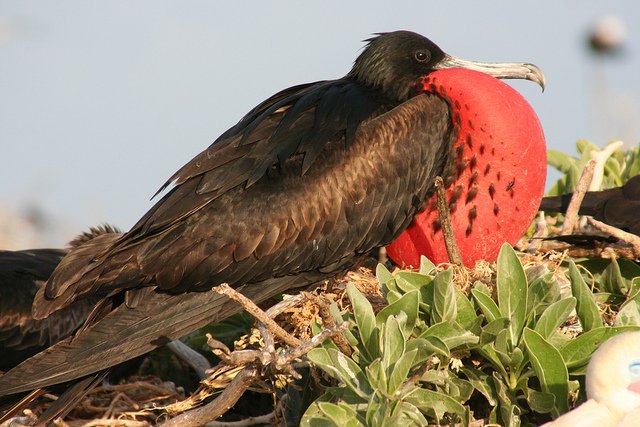 The classic shot of a male Great Frigatebird. Actually, the gular sack isn’t fully inflated, but you get the idea.
The classic shot of a male Great Frigatebird. Actually, the gular sack isn’t fully inflated, but you get the idea.
The Great Frigatebirds vary by sex. The adult male is entirely black (unlike the other species of frigatebird found in the Pacific), whereas the female has a white breast and throat. They also have the inflatable gular sack used to attract a female to their nesting site that is the thing I remember about from the group form the essay I wrote about them when I was eight.
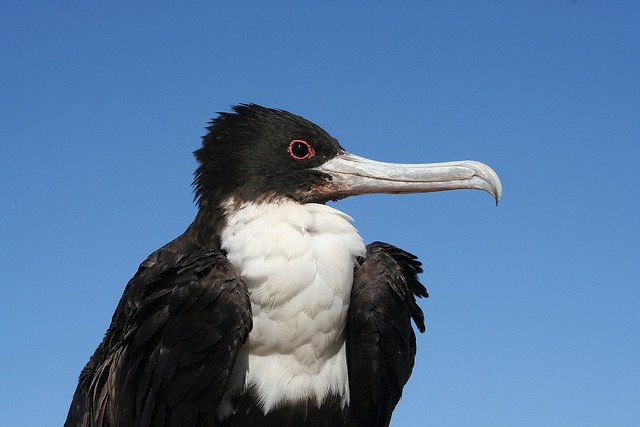 Adult female at rest. Note the red eye-ring, absent in males.
Adult female at rest. Note the red eye-ring, absent in males.
Great Frigatebirds, like other members of the family, have very long lives and reach sexual maturity very slowly. It takes four to six months for chicks to fledge, and us much as 450 days to achieve full independence after fledging, the longest period of parental dependency of any bird. Having become independent they will not achieve full adult plumage until they are between eight and eleven years old. Chicks are hatched naked and helpless, but then develop the first covering of white down.
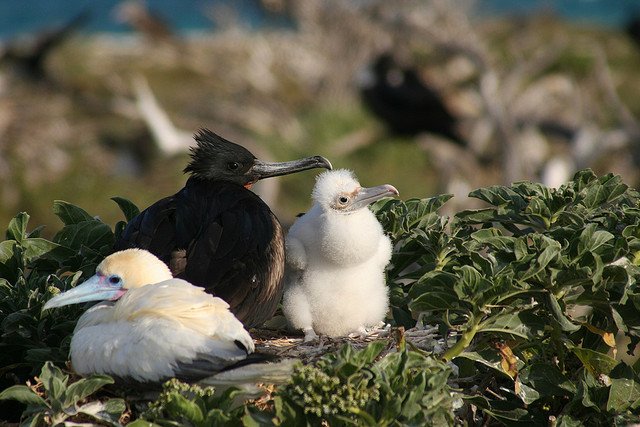 Chick at downy stage with adult male and a Red-footed Booby.
Chick at downy stage with adult male and a Red-footed Booby.
As the chicks grow older they begin to develop adult-like plumage. The main differences is that the black areas tend to be duller and browner, and the head is white with varying amounts of rust.
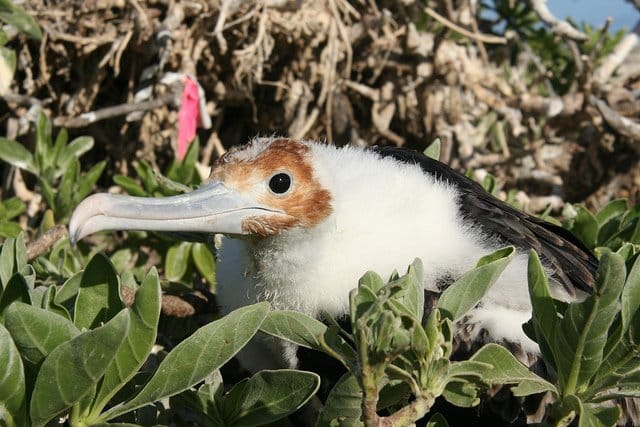 This chick is beginning to get juvenile plumage on the face and body but still has a lot of down.
This chick is beginning to get juvenile plumage on the face and body but still has a lot of down.
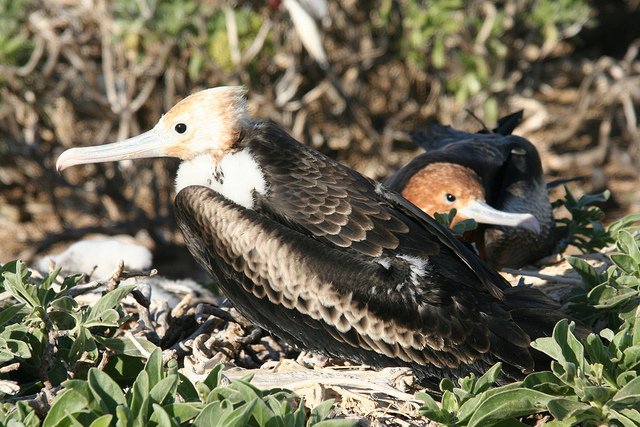 Much less down on this chick. Notice the head is on the whiter end of the rust-white spectrum.
Much less down on this chick. Notice the head is on the whiter end of the rust-white spectrum.
This very nearly fledged chick has a lot more rust on the head and throat. Around fledging you can also notice the prominent wingbar.
At about one and a half years of age the rust begins to fade from the head, noticeably so by the age of two and a half. By the age of three and a half the head is usually entirely white, although females may retain some rust on the breast until they are nine years old.
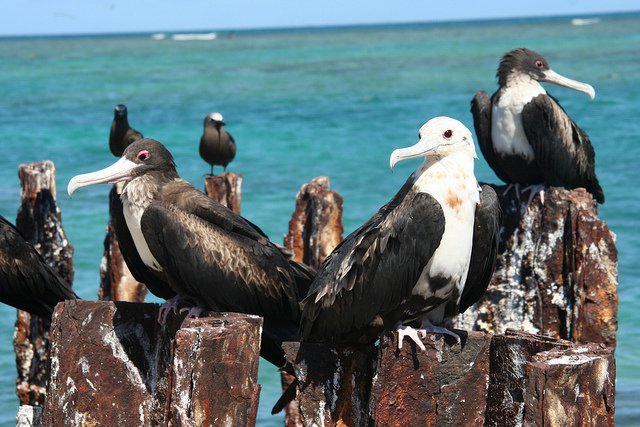 A white-headed adolescent flanked by two female adults.
A white-headed adolescent flanked by two female adults.
 The head of this female is beginning to get black feathers, but there is still a tinge of rust on the breast.
The head of this female is beginning to get black feathers, but there is still a tinge of rust on the breast.
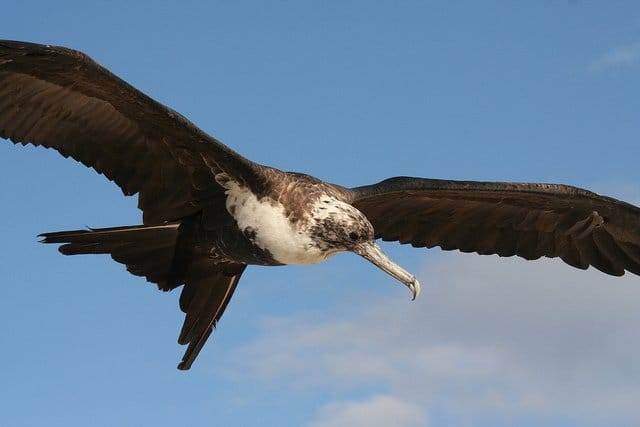 Here I think is a male with an increasingly black head, probably around 5 to 6 years old. Notice that the breast is still white.
Here I think is a male with an increasingly black head, probably around 5 to 6 years old. Notice that the breast is still white.
Next week I’ll return to these stupendous birds to look a little more closely at their lives at Tern and at sea. In the meantime, enjoy some scenery porn.
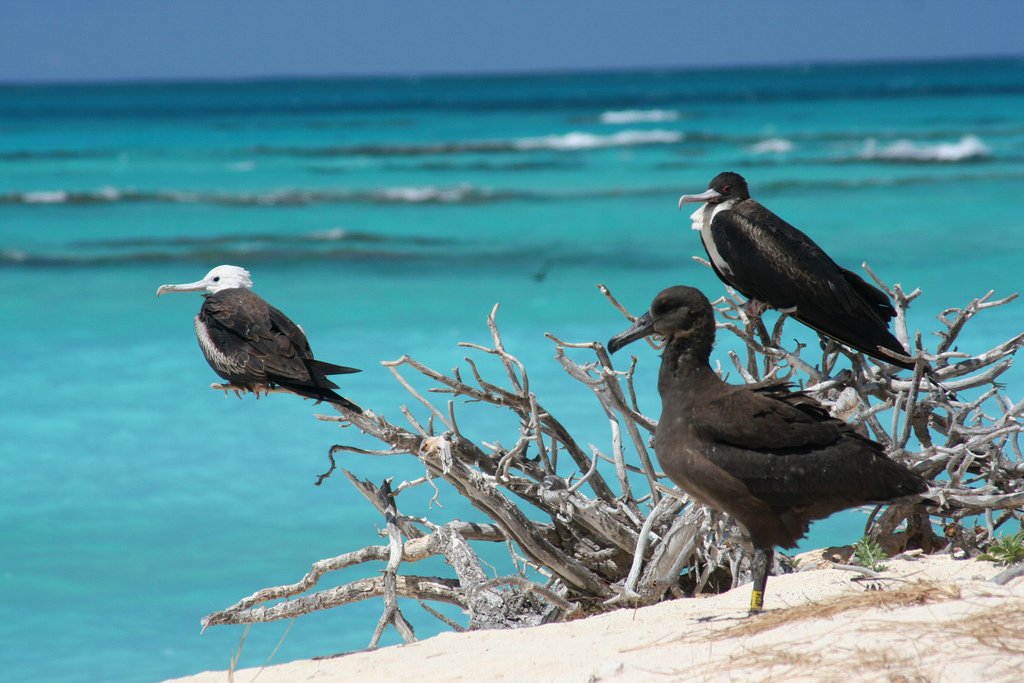 White-headed juvenile and adult female with almost fledged Black-footed Albatross.
White-headed juvenile and adult female with almost fledged Black-footed Albatross.
All images taken by author but belong to the USFWS and are therefore in the public domain.
…
If you liked this post and want to see more great images of birds make sure to check out 10,000 Clicks, our big (and growing) page of galleries here at 10,000 Birds.


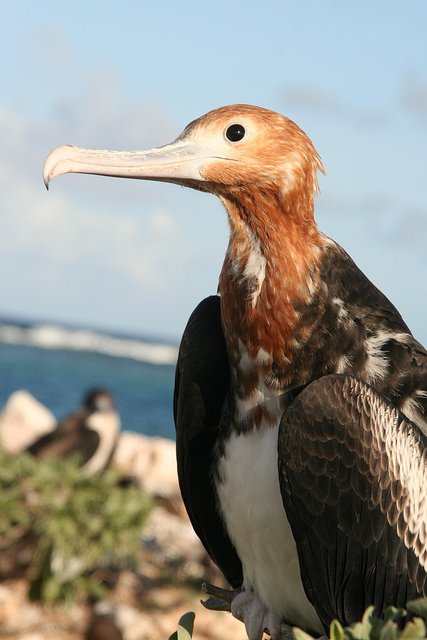











Duncan, this is an absolutely fantastic post!
It taught me stuff, the pictures are fantastic, and you threw in an albatross.
Good stuff!
Arrr, this be a good post.
Very nice set of Pterosaur..I mean Frigatebird photos.
450 days! Wow, I had no idea. When were you on Tern? I volunteered on Midway in 2009…